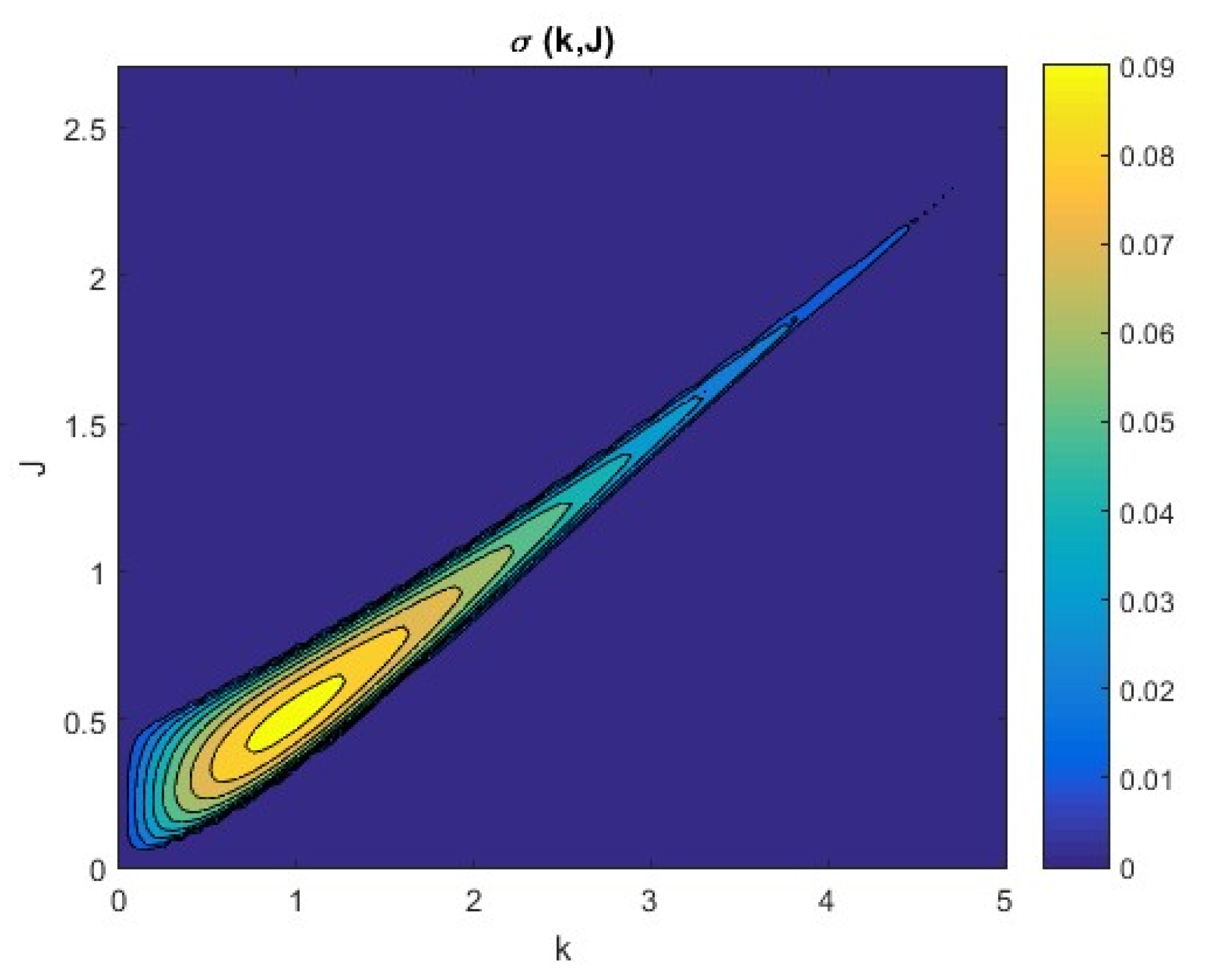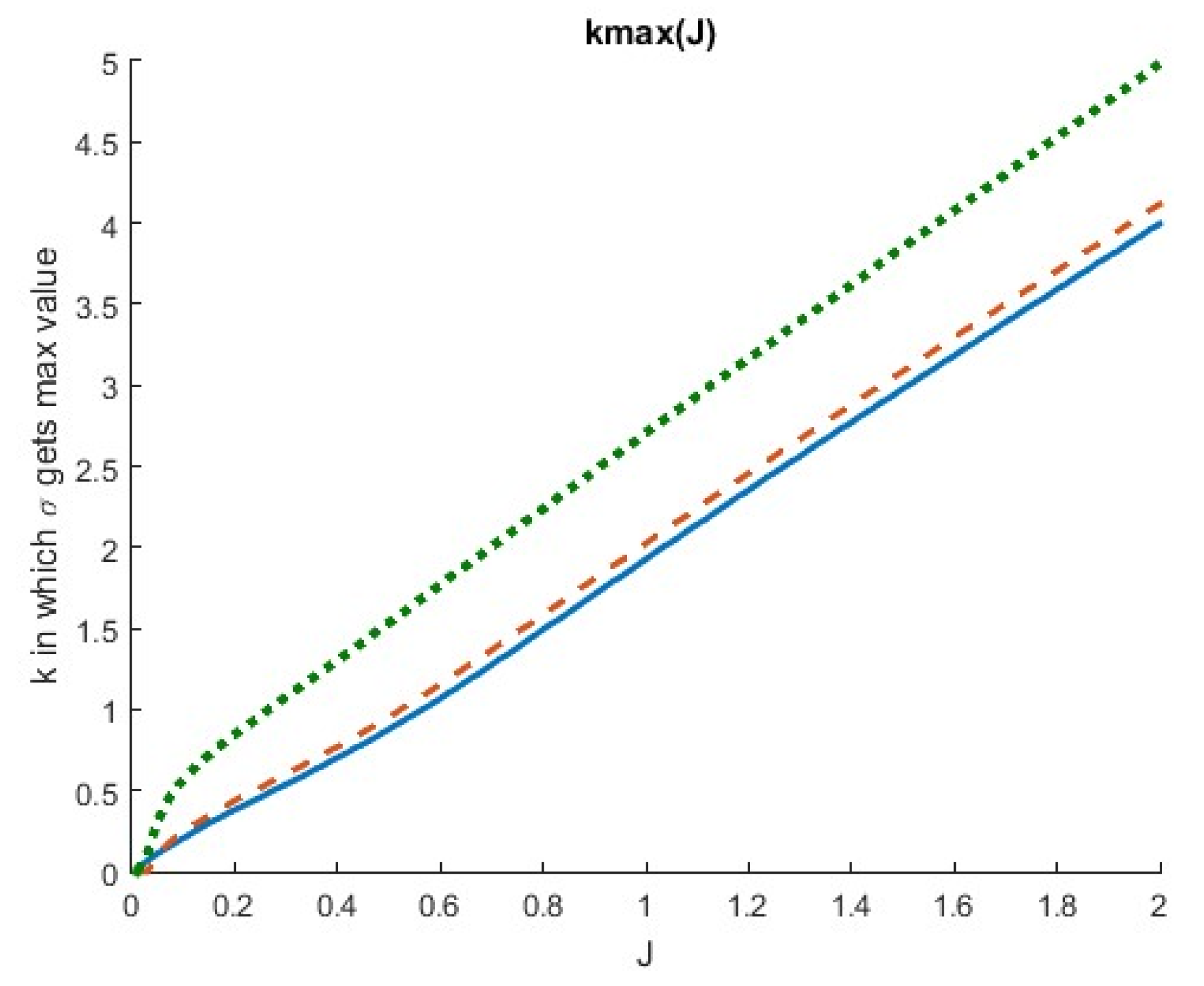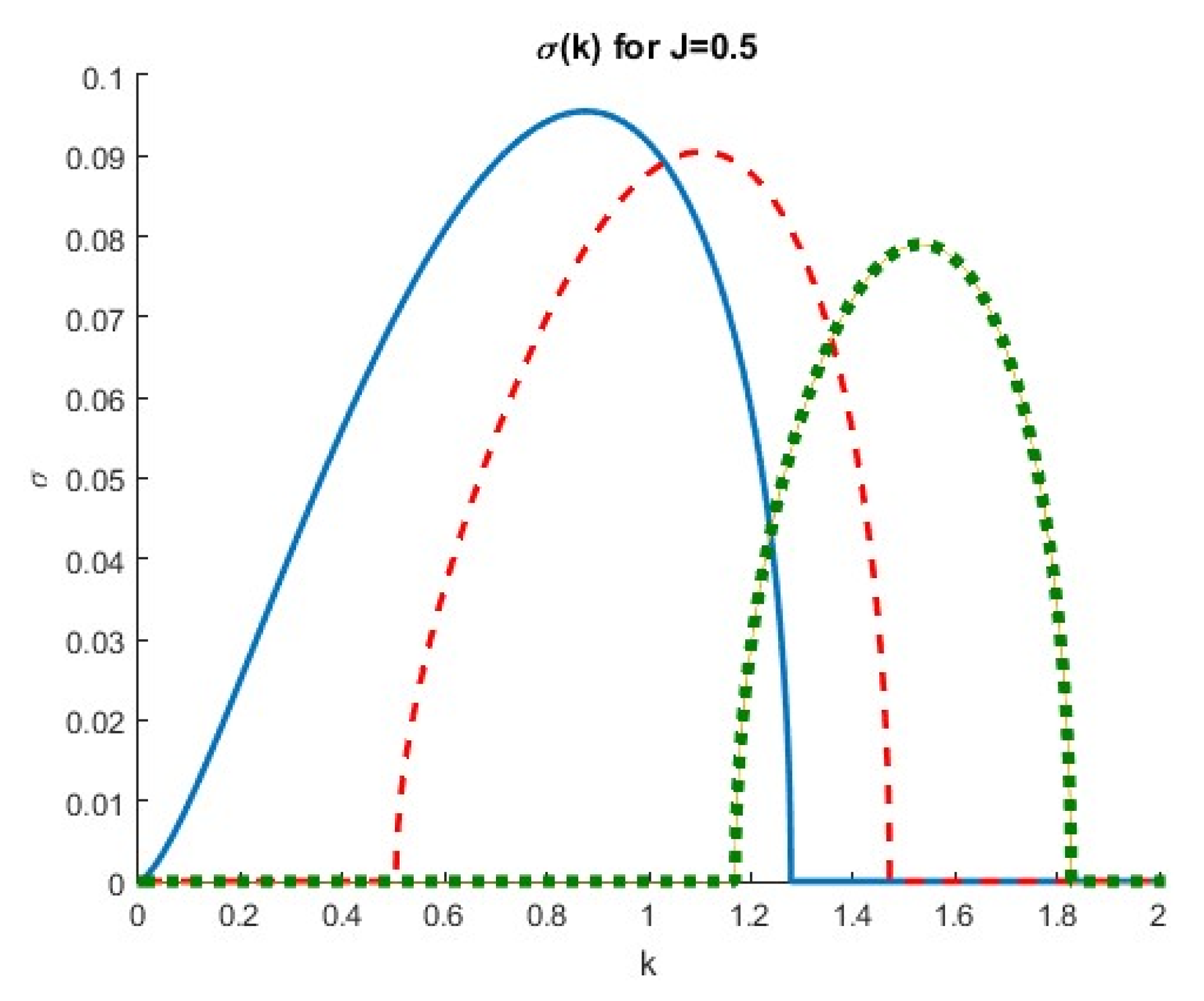The Non-Boussinesq Taylor–Caulfield Instability †
Abstract
:1. Introduction
2. Perturbation Method
3. Investigation of the Taylor–Caulfield Instability
4. Conclusions
Author Contributions
Funding
Institutional Review Board Statement
Informed Consent Statement
Data Availability Statement
Conflicts of Interest
References
- Caulfield, C.P. Layering, instabilities and mixing in turbulent shear flows. Annu. Rev. Fluid Mech. 2021, 53, 113–145. [Google Scholar] [CrossRef]
- Lord Rayleigh, F.R.S. On the stability or instability of certain fluid motions. Proc. Lond. Math. Soc. 1880, 11, 57–70. [Google Scholar] [CrossRef]
- Drazin, P.G.; Reid, W.H. Hydrodynamic Stability, 2nd ed.; Cambridge University Press: Cambridge, UK, 1981; p. 605. [Google Scholar]
- Holmboe, J. On the behavior of symmetric waves in stratified shear layers. Geofys. Publ. 1962, 24, 67–113. [Google Scholar]
- Taylor, G.I. Effect of variation in density on the stability of superposed streams of fluid. Proc. Lond. Math. Soc. 1931, 132, 499–523. [Google Scholar]
- Caulfield, C.P. Multiple linear instability of stratified shear flow. J. Fluid Mech. 1994, 258, 255–285. [Google Scholar] [CrossRef]
- Lee, V.; Caulfield, C.P. Nonlinear evolution of a layered stratified shear flow. Dyn. Atmos. Oceans 2001, 34, 103–124. [Google Scholar] [CrossRef]





Disclaimer/Publisher’s Note: The statements, opinions and data contained in all publications are solely those of the individual author(s) and contributor(s) and not of MDPI and/or the editor(s). MDPI and/or the editor(s) disclaim responsibility for any injury to people or property resulting from any ideas, methods, instructions or products referred to in the content. |
© 2023 by the authors. Licensee MDPI, Basel, Switzerland. This article is an open access article distributed under the terms and conditions of the Creative Commons Attribution (CC BY) license (https://creativecommons.org/licenses/by/4.0/).
Share and Cite
Tolidis, T.; Bakas, N.A. The Non-Boussinesq Taylor–Caulfield Instability. Environ. Sci. Proc. 2023, 26, 66. https://doi.org/10.3390/environsciproc2023026066
Tolidis T, Bakas NA. The Non-Boussinesq Taylor–Caulfield Instability. Environmental Sciences Proceedings. 2023; 26(1):66. https://doi.org/10.3390/environsciproc2023026066
Chicago/Turabian StyleTolidis, Theodoros, and Nikolaos A. Bakas. 2023. "The Non-Boussinesq Taylor–Caulfield Instability" Environmental Sciences Proceedings 26, no. 1: 66. https://doi.org/10.3390/environsciproc2023026066
APA StyleTolidis, T., & Bakas, N. A. (2023). The Non-Boussinesq Taylor–Caulfield Instability. Environmental Sciences Proceedings, 26(1), 66. https://doi.org/10.3390/environsciproc2023026066





